Consider the following piece of code:
package com.sarvagya;
import java.util.Arrays;
import java.util.List;
import java.util.concurrent.ExecutionException;
import java.util.concurrent.ForkJoinPool;
import java.util.stream.Collectors;
public class Streamer {
private static final int LOOP_COUNT = 2000;
public static void main(String[] args){
try{
for(int i = 0; i < LOOP_COUNT; ++i){
poolRunner();
System.out.println("done loop " + i);
try{
Thread.sleep(50L);
}
catch (Exception e){
System.out.println(e);
}
}
}
catch (ExecutionException | InterruptedException e){
System.out.println(e);
}
// Add a delay outside the loop to make sure all daemon threads are cleared before main exits.
try{
Thread.sleep(10 * 60 * 1000L);
}
catch (Exception e){
System.out.println(e);
}
}
/**
* poolRunner method.
* Assume I don't have any control over this method e.g. done by some library.
* @throws InterruptedException
* @throws ExecutionException
*/
private static void poolRunner() throws InterruptedException, ExecutionException {
ForkJoinPool pool = new ForkJoinPool();
pool.submit(() ->{
List<Integer> numbers = Arrays.asList(1,2,3,4,5,6,7,8,9,10, 11,12,14,15,16);
List<Integer> collect = numbers.stream()
.parallel()
.filter(xx -> xx > 5)
.collect(Collectors.toList());
System.out.println(collect);
}).get();
}
}
In above code,poolRunner method is creating a ForkJoinPool and submitting some tasks to it. When using Java 8 and keeping LOOP_COUNT as 2000, we could see max threads created was about 3600 as seen below
 fig: Profiling
fig: Profiling
All these threads goes down to almost 10 after some period of time. However, in OpenJDK 11 keeping same LOOP_COUNT is going to produce following error:
[28.822s][warning][os,thread] Failed to start thread - pthread_create failed (EAGAIN) for attributes: stacksize: 1024k, guardsize: 4k, detached.
[28.822s][warning][os,thread] Failed to start thread - pthread_create failed (EAGAIN) for attributes: stacksize: 1024k, guardsize: 4k, detached.
[28.822s][warning][os,thread] Failed to start thread - pthread_create failed (EAGAIN) for attributes: stacksize: 1024k, guardsize: 4k, detached.
Exception in thread "ForkJoinPool-509-worker-5" java.lang.OutOfMemoryError: unable to create native thread: possibly out of memory or process/resource limits reached
at java.base/java.lang.Thread.start0(Native Method)
at java.base/java.lang.Thread.start(Thread.java:803)
at java.base/java.util.concurrent.ForkJoinPool.createWorker(ForkJoinPool.java:1329)
at java.base/java.util.concurrent.ForkJoinPool.tryAddWorker(ForkJoinPool.java:1352)
at java.base/java.util.concurrent.ForkJoinPool.signalWork(ForkJoinPool.java:1476)
at java.base/java.util.concurrent.ForkJoinPool.deregisterWorker(ForkJoinPool.java:1458)
at java.base/java.util.concurrent.ForkJoinWorkerThread.run(ForkJoinWorkerThread.java:187)
It reaches max thread limit very soon. Keeping LOOP_COUNT to 500, works fine, however, these threads are cleared very very slowly and reaches plateau of about 500 threads. See the images below:
 fig: Thread info in OpenJDK 11
fig: Thread info in OpenJDK 11
Threads were PARKED in JDK 8, but WAIT in JDK 11. Number of daemon threads should be reduced in Java 11 as well , however, it is slow and doesn't work as expected. Moreover, assume I don't have control over poolRunner method. Consider this method is provided by some external library.
Is this issue with OpenJDK 11 or am doing something wrong in code. Thanks.

